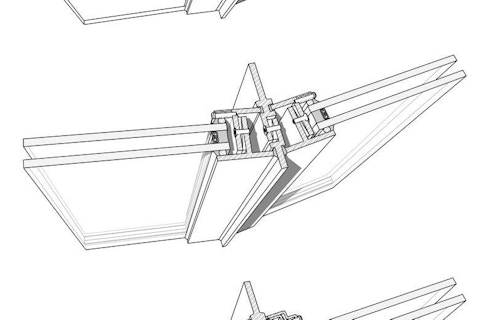Embodied Carbon
Welcome to this edition of the SKINS newsletter, which is all about carbon! As guest editor this month, I am representing FTI’s embodied carbon (EC) working group, whose members include our fearless leader Sanjeev Tankha (Starq Design), along with Mic Patterson (FTI founder), Irene Martin (Arup), Sophie Pennetier (Enclos), Shreya Das (Stok), Chris Drew (Smith+Gill), Andrea Zani (Permasteelisa), Steve Selkowitz (LBNL), Tom Bougher (2050 Partners), Laura Karnath (Walter P Moore), and Lisa Rammig (EOC Engineers). This issue highlights several important topics relative to embodied carbon and the trade-offs with operational carbon that I summarize here. The content draws from 2022 World Congress papers, output from our working group, and relevant content from the broader façade and construction-focused community.
A Guide for Action
We have a link to a new episode of the SKINS podcast in which Irene, Sophie, Andrea and I discuss a new summary document the EC working group has developed. It identifies priorities to reduce both operational and embodied carbon emissions in façade design, plus a step-by-step guide for actions that each participant in the value chain – owners and developers, designers, contractors and manufacturers – can take to have an impact. The document itself will be published shortly, but in the meantime we invite you to have a listen to the podcast. Slides from our presentation at our LA Forum in October can be found here.
A white paper from FTI's EC Working Group
What about knowledge gaps in the understanding of embodied carbon as it relates to the building skin and what's needed to fill these gaps? Focus on carbon: Unlocking embodied carbon reductions in facade systems explores this and suggests considerations and strategies for designers and the industry to move forward. The paper summarizes the findings of ongoing research by the EC working group.
Operational versus embodied carbon
Which is most important? This question is addressed in several of the curated content items in this issue. A blog, which Tom Bougher and I co-authored, attempts to create a model for quantifying the time value of carbon that can be used to directly compare embodied to operational carbon to provide more accurate life cycle assessments. A webinar by the Carbon Leadership Forum also tackles the time value of carbon.
An excellent multi-variable analysis of operational and embodied carbon trade-offs for aluminum fenestration is detailed by Tom Bougher and his colleague Richard Braunstein (Oldcastle Building Envelope) in their paper “The Carbon Footprint of Aluminum Fenestration” from our 2022 World Congress. It is well worth the read for those wanting to specify aluminum fenestration with optimized balance between embodied and operational carbon.
Moving to the opaque part of the envelope, we highlight a blog from 2050 materials by Raquel Guerra Aragones, which looks at the embodied and operational trade-offs for highly carbon intensive insulation materials. In addition to an illustrated guide, it reviews the embodied carbon of existing and new lower carbon materials, their thermal performance and health and safety characteristics.
Service life extension for low carbon design
A focus on service life is an insurance policy for the upfront investment in embodied carbon. The metric embodied carbon per year of service life is an excellent way of comparing façade components and design options. In another paper from our 2022 World Congress: “Addressing Embodied Carbon: Managing Insulating Glass Service Life”, co-authored with Adam Nizich (formerly at SGH and now at EOC Engineers), we identify a methodology to protect and extend the life of high-embodied carbon insulating glass units.
Understanding Environmental Product Declarations
We also touch on the high cost, low precision challenges with environmental product declarations (EPDs), the risks for over-interpretation, comparisons and making supply chain decisions. Understanding the global warming potential data from EPDs is an especially important topic now that state, local and federal governments are setting targets for embodied carbon of glass (and other high impact materials). Our curated article “Few Things in Life are Certain” dives into this topic for insulating and flat glass, providing important insights into published EPD data and their precision (or lack thereof) to help public policy makers and design teams make better data-based decisions.
Better carbon-based design decisions
As FTI member, Ted Kesik (University of Toronto), has stated before, “Typically, when just 1% of a project’s capital cost has been expended (schematic design stage), more than 80% of its life cycle impacts are committed.” Design drives most of the embodied carbon emissions, especially related to glass, rather than selections made at the supply chain. An insightful paper from our World Congress by Paulina Szpiech, Valerie Leon-Green and Shivanie Rambaran provides a methodology for early design stage whole building lifecycle assessment to support more effective low-carbon design.
Another paper from the FTI World Congress archives by Isabelle Hens (Atelier 10), Sophie Pennetier and Simon Schleicher (UC Berkeley), describes a theoretical evaluation of whether substituting wood for aluminum unitized curtainwall mullions could reduce embodied carbon. It encourages manufacturers to look at wood-based design. They note that different project locations benefit differently and selecting local glass fabricators is important.
We hope you enjoy the reading, watching and listening! Feeling passionate about embodied carbon after diving into the newsletter? Please consider joining our working group and leaning in to the work of the institute! Contact our Executive Director, Katerina at khojgrova@facadetectonics.org
Wishing you all successful carbon reduction pursuits!
Helen Sanders, Technoform
President, Facade Tectonics Institute
Guest Editor
The SKINS Team:
Mic Patterson, Facade Tectonics Institute
Executive Editor
Val Block, Facade Tectonics Institute
Associate Editor
Betsy Covington, Technoform
Content Editor
Alberto Alarcon, Kuraray
Social Media & Events Calendar Editor
If you would like to join the SKINS team, let us know at skins@facadetectonics.org. There is much to do!

Helen Sanders
General Manager
Technoform North America
Helen Sanders - guest editor
Looking for something specific?
Search our extensive library.
FTI’s SKINS email is the central source for the latest in building skin trends and research.
All emails include an unsubscribe link. You may opt out at any time. See our privacy policy.









